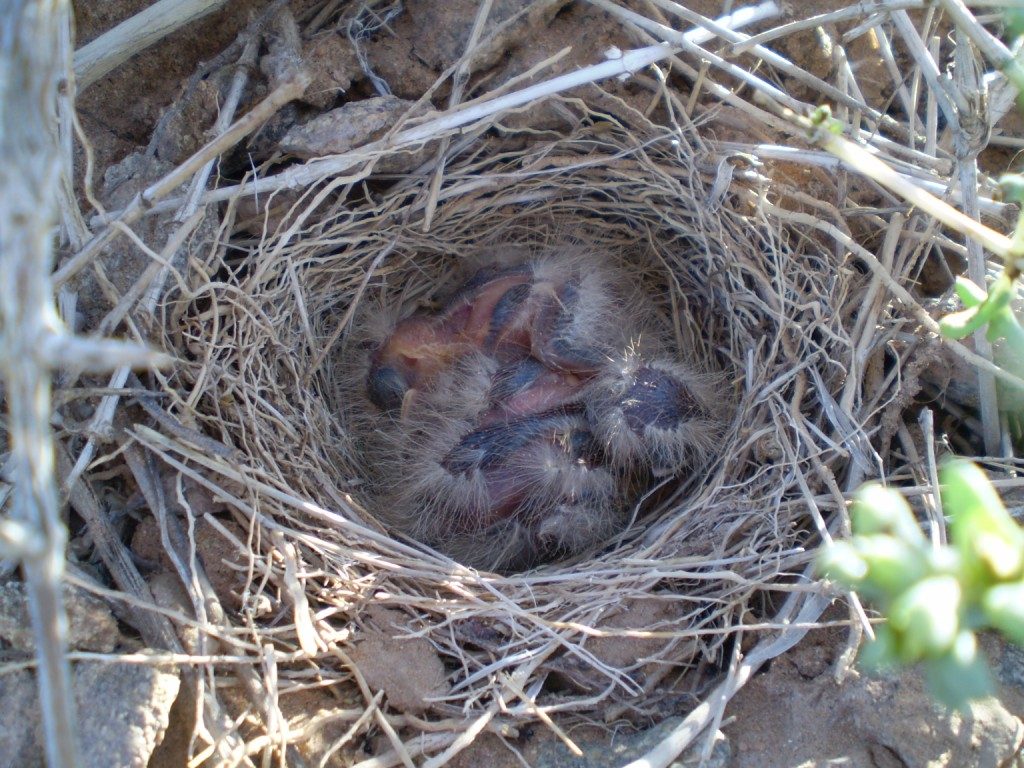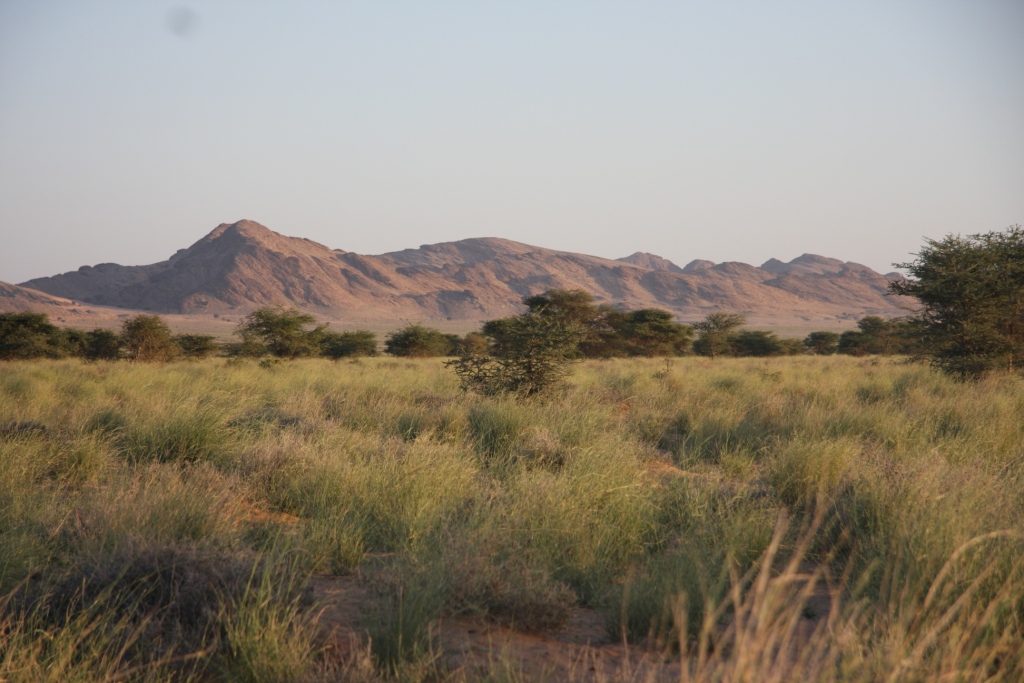Many desert birds are nomadic and their movements are governed mainly by local rainfall which is scarce and occasional in the Sahara.
It’s known that annual plants in the deserts respond to the short periods of rains with extremely rapid growth. This consequently engenders rapid growth in animal life (insects, other arthropods…). And desert birds are well adapted to take advantage of all these plentiful resources to reproduce and rear their chicks.
The region of Oued Dahab has witnessed an important amount of rainfall during the last week of September. From the human point of view, according to the local stockbreeders cited by the national news agency “this rain will undoubtedly have beneficial effects on the region that have some 70 000 heads of small livestock and 25 000 camels”.
From the birding point of view, the September rains will have likewise a beneficial effect on the birds of the area, especially the Saharo-Sahelian species like Black-crowned Sparrow-Lark, African Dunn’s Lark, Cricket Warbler and Desert Sparrow. Other bird species that are found also in more northern latitudes of North Africa (Desert Lark, Thick-billed Lark, Fulvous Babbler…) will take advantages of this rain as well.
Birding after the rains in autumn 2010
All these species were found breeding during our visit to the region of Oued Dahab in 21-28 October 2010 following autumn rains exactly like this year. During our trip we visited Dakhla, Imlily, Aousserd road and all the way to some kilometres north of the border with Mauritania (map below).
I would like to think once again the members of the Association Nature Initiative and their friends who helped us during this trip (their names appear as coauthors of first report cited below). A special mention goes to Mohamed Lamine Samlali, who probably contributed the most to make the trip a memorable one.
Birds found breeding during our visit:
For these birds, we saw adults collecting nesting material, eggs, broods and/or fledged juveniles:
- African Dunn’s Lark (Eremalauda dunni dunni),
- Desert Lark (Ammomanes deserti),
- Thick-billed Lark (Ramphocoris clotbey),
- Cricket Warbler (Spiloptila clamans),
- Fulvous Babbler (Turdoides fulva),
- Desert Sparrow (Passer simplex), and
- Trumpeter Finch (Bucanetes githagineus).
Birds were singing, flight-displaying or alarming:
The majority of these birds were just at the beginning of their breeding cycles when we visited the region. Later observations by other birders in December and January showed that they also bred during that season:
- Cream-coloured Courser (Cursorius cursor),
- Black-crowned Sparrow-lark (Eremopterix nigriceps),
- Bar-tailed Lark (Ammomanes cincturus),
- Hoopoe Lark (Alaemon alaudipes) ,
- Desert Wheatear (Oenanthe deserti),
- White-crowned Black Wheatear (Oenanthe leucopyga), and
- Desert Grey Shrike (Lanius elegans elegans).
For more details about all these observations (with GPS coordinates, a map of the itinerary…) see the first report. See also the next two papers:
Qninba, A., Radi, M., Amezian, M., Ibn Tattou, M., Khayya, M.L., Samlali, M.L., Khalil, M.L. & Hammia, A. 2011. Nidifications automnales d’oiseaux sahariens dans la région d’Oued Ad-Dahab – Lagouira (Maroc méridional). Go-South Bulletin 8: 21-34.
Amezian, M., Radi, M., Ibn Tattou, M., Khayya, M.L., Samlali, M.L & Qninba, A. 2011. Cricket Longtail breeding in southern Morocco. Dutch Birding 33: 229-233.
Amezian, M., Bergier, P. & Qninba, A. 2014. Autumn-winter breeding by Cream-coloured Coursers Cursorius cursor is more common than previously reported. Wader Study Group Bulletin 121: 177–180.






nous sommes ornithologues et souhaitons venir dans la région d’Aoussed en mars prochain. Nous viendrons en avion puis louerons un véhicule.
Nous avons vu sur internet qu’il y a un hôtel à Aousserd (hotel barbas), mais nous s’arrivons pas à avoir leur N° de téléphone (2 N° trouvés sur des guides, n’étaient plus valables).
Cet hotel existe-t-il toujours ? comment les contacter pour réserver une chambre ?
Connaissez-vous un autre hotel ? si oui, comment les contacter.
MERCI DE NOUS REPONDRE VITE.
Salut Ragot,
Les telephone n’étaient plus valables par ce que l’hôtel est fermé.
p.s.
L’Engoulevent doré se reproduit à Aousserd! L’information vient d’être publié ce mois, voir ici si vous n’êtes pas encore au courant: https://magornitho.org/2017/02/breeding-golden-nightjar/
Bonne chance,
Mohamed